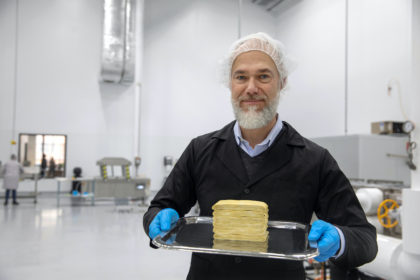
The world of fermentation-enabled alternative proteins is growing rapidly. Investments in these producers tripled in 2021 to $1.69 billion, and the number of companies increased by 20%.
“It’s really cemented fermentation’s position within alternative proteins and their investment landscape,” says Sharyn Murray, senior investor engagement specialist for the Good Food Institute (GFI). Over $5 billion was invested in alternative proteins last year. “It really demonstrates the central place that alt proteins hold for investors when they consider the future of food.”
Murray and other GFI leaders shared these and other dimensions of the alternative protein space during their annual State of the Industry virtual report. Below are highlights.
Scaling Challenges
Infrastructure is the biggest stumbling block for fermented alternative protein companies.
“The elephant in the room, perhaps the greatest hurdle that alternative protein fermentation effects and the alt protein industry as a whole will face over the next decade, is the looming shortage of available fermentation manufacturing capacity,” says Ryan Dowdy, GFI’s science and technology analysis manager.
Roughly 95% of the existing precision fermentation facilities are outdated and not configured for food production – many were made for pharmaceutical or ethanol production. More precision fermentation capacity was lost in 2021 than added, GFI reports.
Pressing is the need to meet global demand for protein by 2030. That goal, Dowdy notes, will require three times the fermentation capacity that is available today. Companies are building their own facilities – like The Better Meat Co. in Sacramento, Nature’s Fynd in Chicago (pictured Nature’s Fynd CEO Thomas Jonas in their new facility) and Mycorena in Göteborg, Sweden.
Hybrid Products Growing
Alternative food products have typically been categorized in three ways: plant-based, fermented and cultivated. GFI still divides their annual report along those three groupings.
But Audrey Gure, GFI’s startup innovation specialist, says, in the future, “we won’t see alternative protein production platforms as distinct industry segments but really rather one large industry where we produce animal product alternatives across the spectrum utilizing ingredients from one or more technologies to achieve the desired sensory and functional properties. Fermentation will play a critical role in these hybrid products.”
Hybrid examples include alt beef derived from cultivated cow cells that have been grown using fermentation techniques, and plant-based collagen made with fermentation-derived ingredients.
“Fermentation also holds disruptive power for other products made from animals beyond meat, eggs, dairy and seafood,” Gure continues, like “infant nutrition, pet food, honey collagen and gelatin are additional product categories that are seeing fermentation innovations.”
What’s in a Name
Nomenclature and labeling continue to be hotly debated.
“In terms of names used, companies are not completely aligned,” notes Madeline Cohen, GFI’s regulatory attorney.
Though companies have come to a consensus on using the term “animal free,” other descriptors used in the fermented alternative protein spaces are contested. For example, biomass fermentation is called Fermotein by The Protein Brewery and Fy by Nature’s Fynd. Brave Robot, Graeter’s and Starbucks all use Perfect Day’s alternative dairy proteins, but the ice cream producers call it “animal-free dairy” while Starbucks says“animal-free milk.”
In Europe, traditional dairy terms like “milk” and “yogurt” are legally prohibited for use by alternative dairy companies. But the European Parliament in 2020 rejected a similar bill for meat producers. If passed, alt meat companies would not have been able to use traditional meat terms like sausage or burgers for products not derived from an animal carcass. GFI notes several companies in the industry are working together to establish verbiage.
